This Killer Fungus Turns Flies into Zombies
Some of the scariest monsters are the ones that grow inside another being and take over its body. Think of the movie “Alien,” where the reptile-like space creature pulsates and grows inside its victim, then explodes out of his chest in a terrifying climax.
That monster might be fictional, but scientists are studying a fungus that’s horrifyingly real — at least for the flies it invades, turns into a zombie-like state and kills in order to reproduce.
“Oh, it’s a nightmare for the flies,” said entomologist Brad Mullens, who retired from UC Riverside after studying the fungus for 20 years. “If their little brains could comprehend it, they would live in fear.”
The fungus is known by its scientific name, Entomophthora muscae, which means “fly destroyer.” It lives off houseflies and fruit flies, among others.
“It’s a crazy system,” said Carolyn Elya, a researcher at Harvard. While getting her Ph.D. at UC Berkeley, she described what a fungus infection looks like in fruit flies and she continues to study their interaction. “The fungus only kills at dusk,” she said.
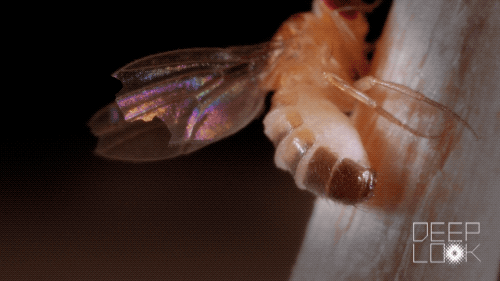
Like a killer puppeteer, the fungus follows a precise clock.
For the first few days after picking up a fungal spore, an infected fruit fly seems normal. But inside its body, the fungus is growing, taking over the fly’s brain and central nervous system and feeding on its fat body, the tissue where insects store nutrients and energy.
At dusk on the fourth or fifth day, the fruit fly stops flying and starts behaving erratically, for example climbing up and down the toothpicks that Elya puts into the vials where she keeps the infected insects.
Then the fly climbs to the top of the toothpick, a behavior Elya and other scientists refer to as “summiting.”
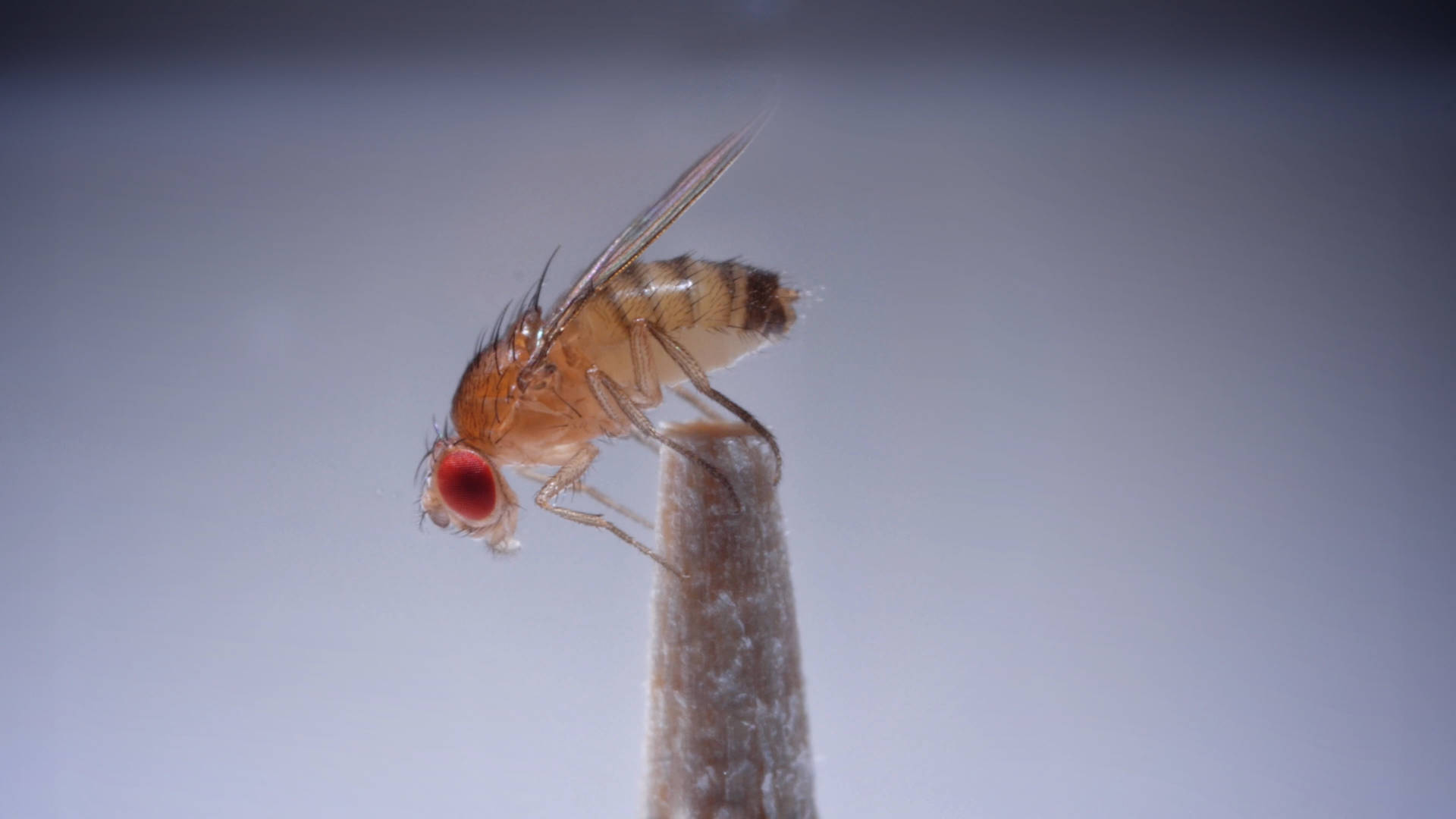
“Maybe the fungus is tapping into the flies’ gravitactic circuitry — neurons that make them climb,” Elya said.
In an unusual twist, the fly then extends its mouthpart down, and some liquid drips out and glues the fly to the surface it’s standing on. Researchers believe the droplets are made up of fungus, though Elya said it’s not clear whether the fungus is inherently adhesive or makes itself sticky so that the fly gets stuck.
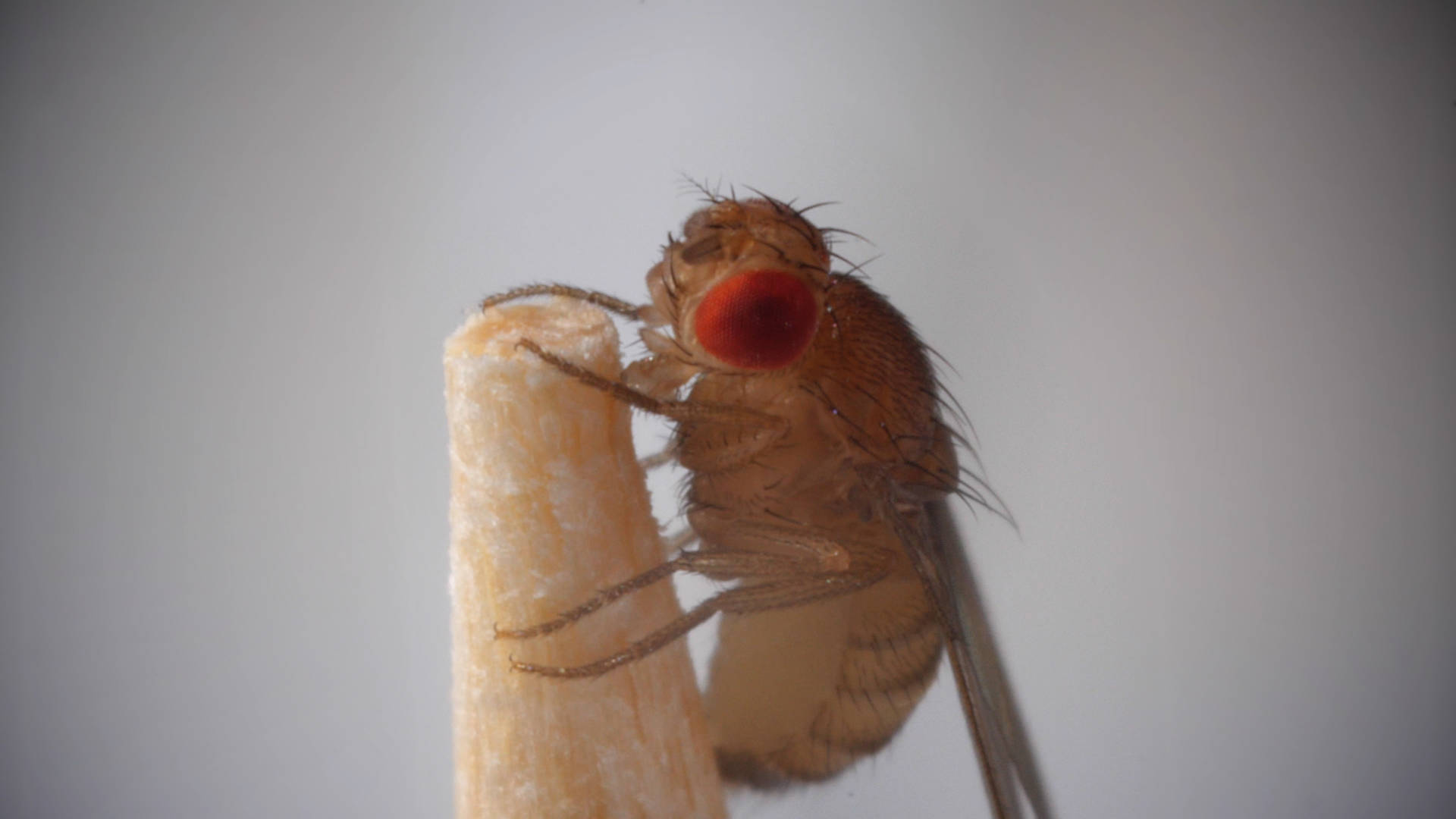
Over the next 10 or so minutes, the fly’s wings ascend in small bursts until they’re pointing straight up. Sometimes this happens more quickly. And then it dies frozen in this lifelike pose.
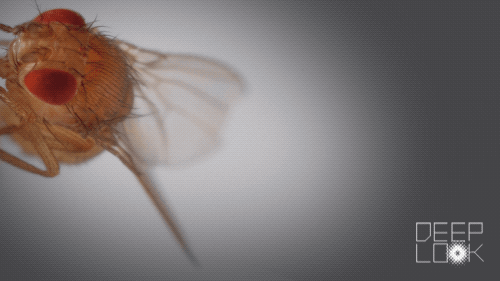
Soon after, white spongy fungus oozes out of its abdomen. When the fungus has all come out, the fly looks as if a cotton ball had grown over its lower body. This white goo is made up of hundreds of tiny lollipop-shaped protrusions called conidiophores, which each launch a microscopic bell-shaped spore at high speed.
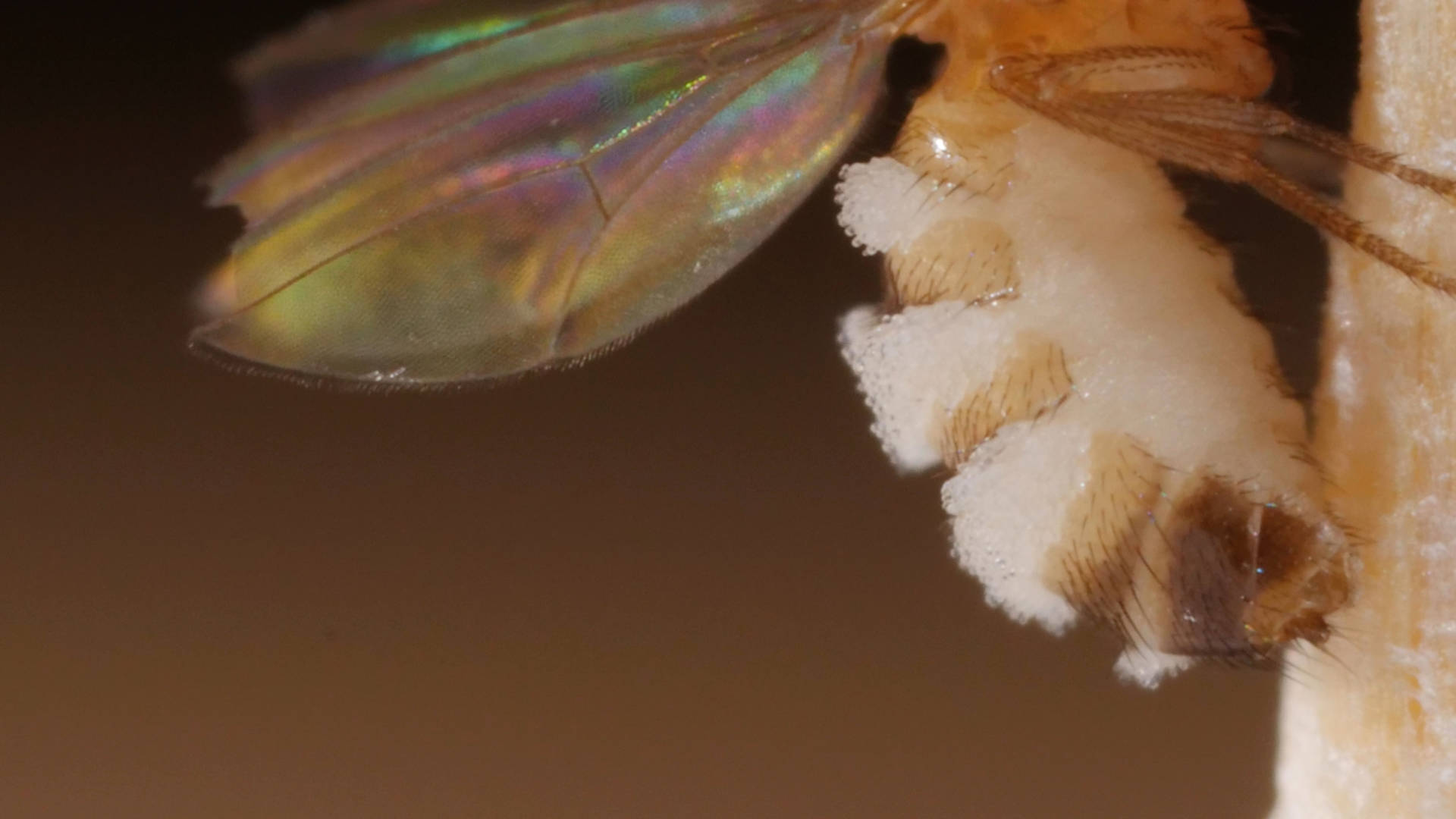
These spores are the next generation of fungus. They need to get into another fly to grow. But why would a healthy fly hang out around a dead one? Mullens found that in dairy and poultry farms, infected houseflies died at dusk on the cool end of the barn — the fungus prefers lower temperatures.
In the morning, living flies would warm themselves in the first rays of sun, which fall right where the flies died the night before. The fungus had spent all night shooting out spores. Come morning, those spores started shooting out secondary spores that infected the living flies that had come to warm up.
The precision of the fungus’ clock was “very neat,” he said.
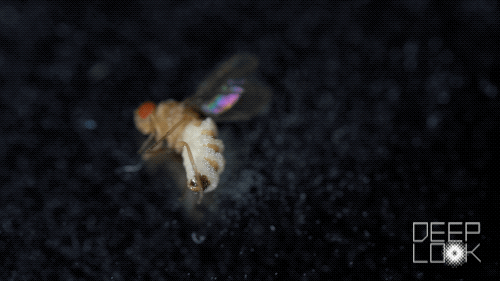
Scientists believe that getting the fly to point its wings up helps the fungus spread its spores. If the fly climbed high enough, the spores might be dispersed by the wind. And there’s an added bonus for the fungus in keeping the fly’s wings up. In houseflies, scientists have observed males mating with infected female cadavers.
“I think the fat females are especially attractive for the males,” said Mullens. Those males carry off some spores and spread them around.
In nature, Entomophthora muscae can be lethal to large groups of flies in the fall, when the cooler temperatures that the fungus prefers have started.
But don’t worry — the fungus doesn’t hurt humans.
“It’s very unlikely that a similar fungus could zombify people,” said Elya. “Not only do we run much warmer than an average fly, we can control our bodily temperature to kill invaders. We also have an adaptive immune system, which is good at amplifying responses to specific invaders.”
Mullens and other researchers tried to figure out how the fungus might be put to use as a biological control for flies in homes and farms. But the spores are short-lived, fragile and difficult to grow in the lab, which has made it impossible to bottle them up and use them as an insecticide. And a housefly lives about as long as it takes the fungus to incubate anyway.
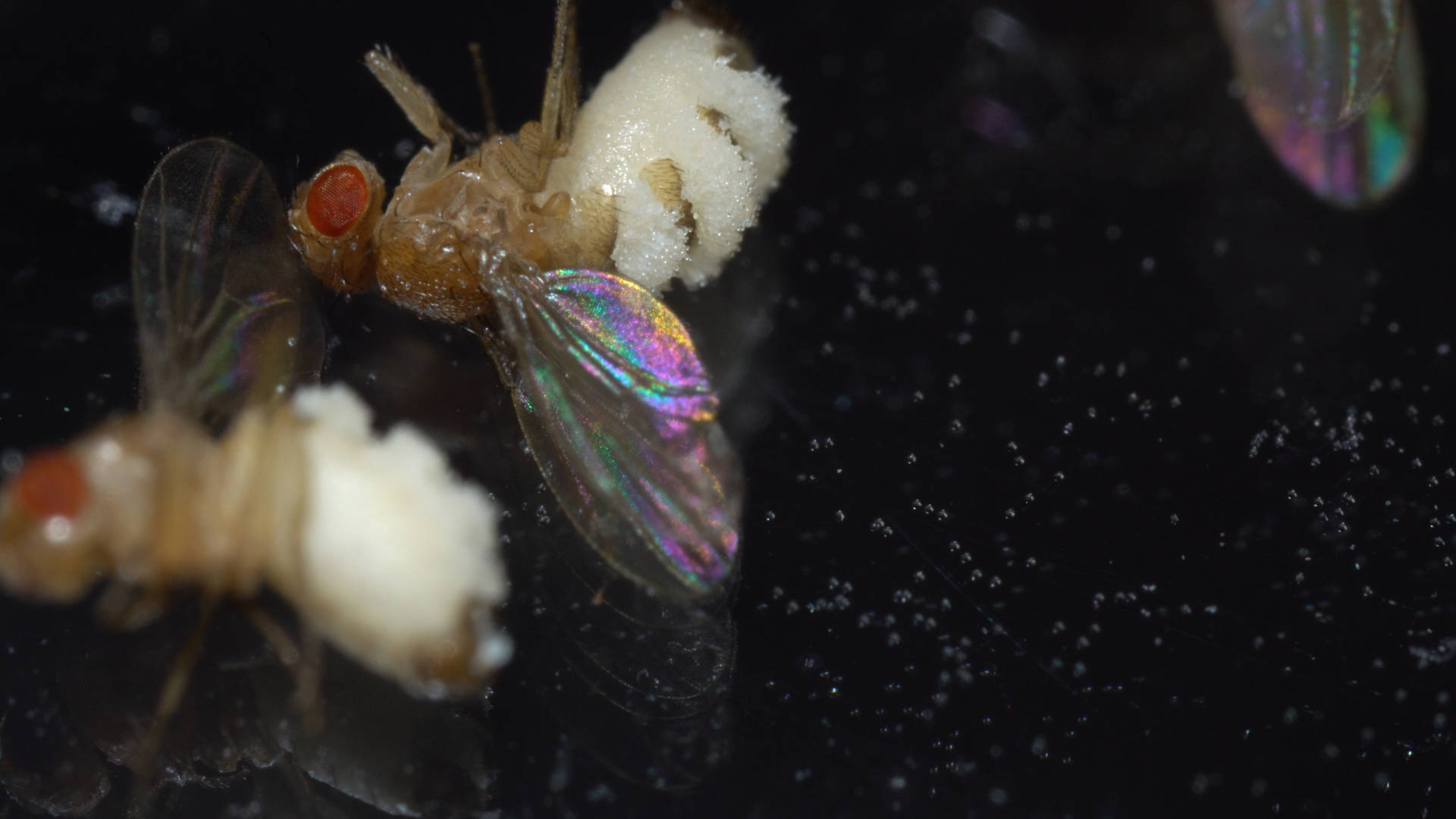
“There’s a lot more efficient ways to kill flies, and faster,” said Mullens.
Still, researchers are imagining ways to put this fly-killer to work for humans. One possible scenario would be to plant the cadavers of fungus-covered flies in a farm while they’re still spewing spores and attracting living flies to them with foul-smelling bait.
Now that’s a horror-movie plot if there ever was one.
